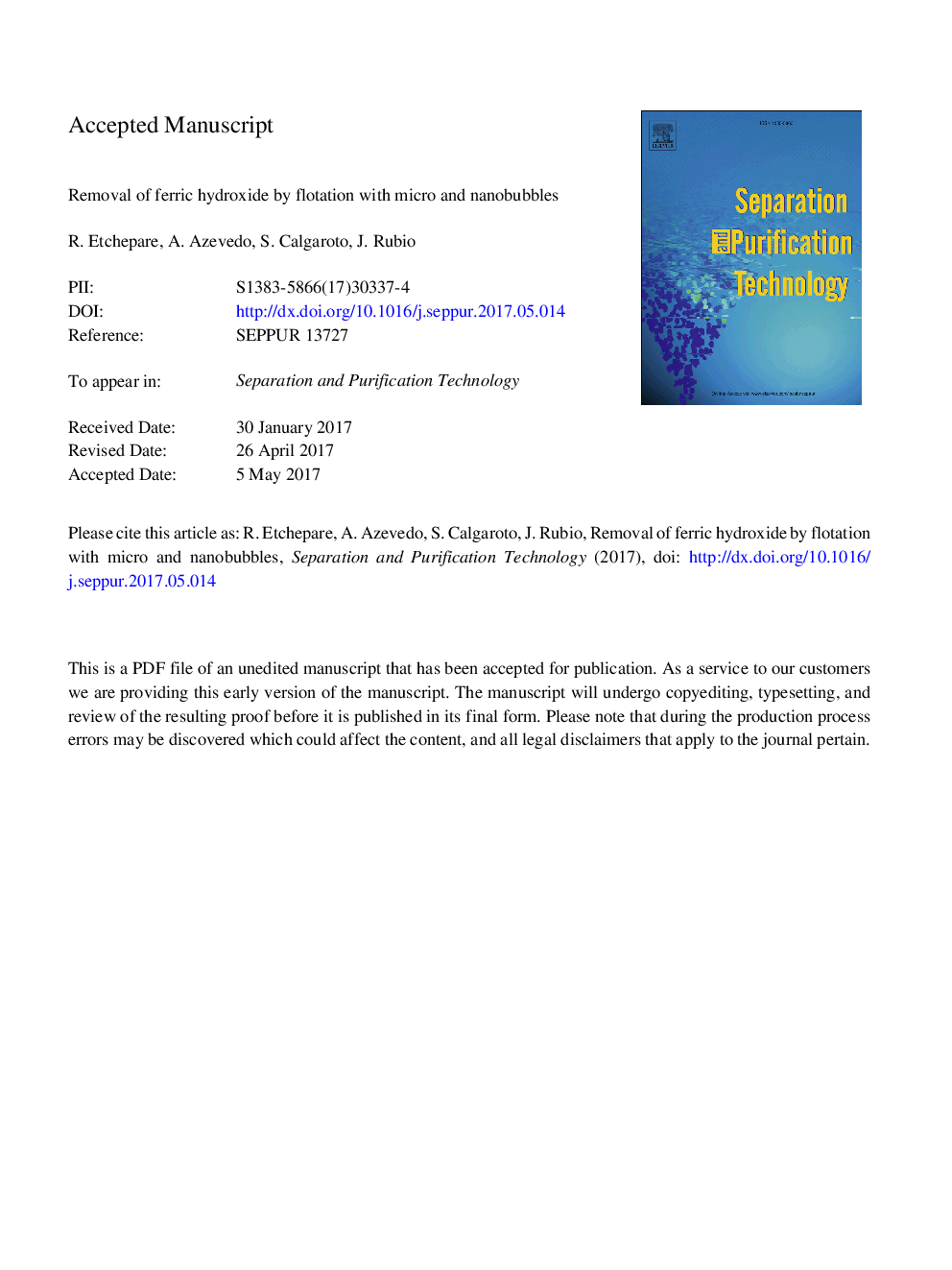| Article ID | Journal | Published Year | Pages | File Type |
|---|---|---|---|---|
| 4989765 | Separation and Purification Technology | 2017 | 26 Pages |
Abstract
This work presents results on the removal of Fe3+ ions as precipitates and nanoparticles of Fe(OH)3, at pH 7, by nanobubbles (NBs) and by dissolved air flotation (DAF), a process which combines microbubbles (MBs) and NBs. DAF is a very well-known technology in the treatment of water and wastewater. Studies were conducted at low and high levels of saturation pressures (Psat of 2 and 4 bar) and with “isolated” (single) NBs. The latter were generated at 2.5 bar, after their separation from the MBs. Best results were obtained with flotation at 2 bar, when the concentration of MBs was low and NBs very high. The removal efficiency was 99% of the feed iron content (30 mg Lâ1), and the treated water had a residual total iron concentration of 0.3 mg Lâ1 and a turbidity of 0.6 NTU (95% reduction). The flotation at 4 bar (mostly by MBs) was faster (0.07 cm sâ1) due to the high lifting power of the MBs but left a higher residual total iron content of 1.7 of mg Lâ1. The flotation with isolated NBs (>108 bubbles mLâ1) attained 91% iron removal due to “floatation” following NBs entrapment and the decrease of the relative density of the aggregates. Flotation of the nanoparticles with NBs was also studied and showed a removal efficiency of about 68%, considered high, for this difficult-to-separate system. All mechanisms involved were discussed in terms of physical, chemical and interfacial phenomena. It is believed that the combination of NBs and MBs has an excellent potential for future separation of particles, including nanoparticles, and will help to broaden applications in removing specific target pollutants from waters and wastewaters.
Related Topics
Physical Sciences and Engineering
Chemical Engineering
Filtration and Separation
Authors
R. Etchepare, A. Azevedo, S. Calgaroto, J. Rubio,
